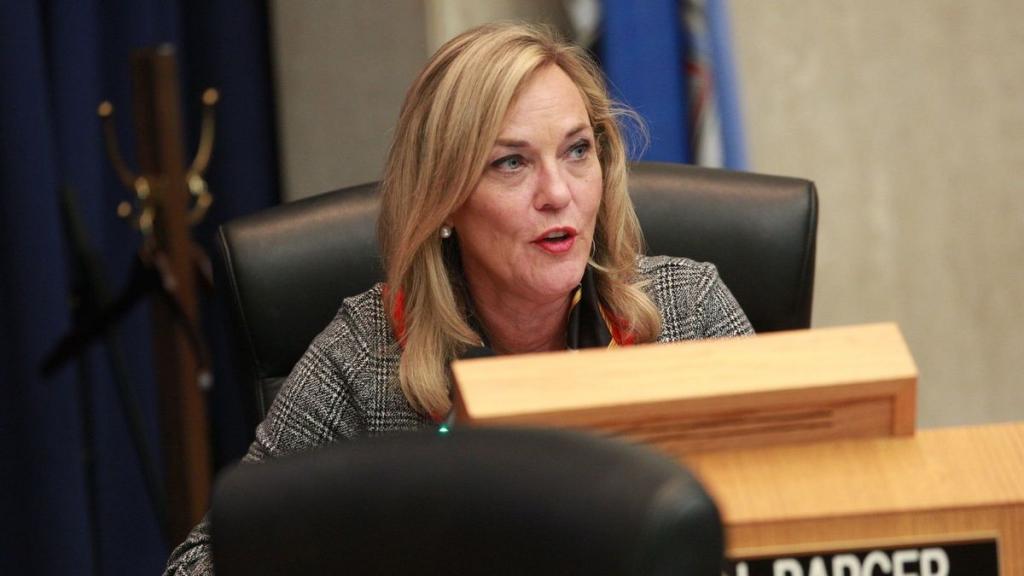If there is a good reason, the deadlines for presenting executive documents for execution can be restored through the judicial authority. However, this feature does not apply to all documents. Applying with a relevant application is allowed only in respect of the writ of execution and court order. The provisions of the law do not apply to other executive documents.
Issuance of writ of execution
This document is issued in order to enforce a court decision. It is printed on a form with the official seal and indicating all the necessary information about the creditor, debtor, debt and the specific amount. In principle, the essence of the document is clear from the title. It is issued after the relevant decision has entered into force. From this date, the law provides another week for the preparation of an executive document.
The deadline for filing a complaint starts from the day the decision is made (and not the last trial in court). When the period for preparation of a complaint has expired, the court’s act becomes legal and its provisions are subject to mandatory enforcement. If the debtor does not take any action for this, the creditor appeals to the court to issue a document, which he will subsequently give to the bailiffs. It takes about one to two weeks to make.

Presentation
The limitation period for the writ of execution is three years. This period begins from the moment that was provided to the opposing party to appeal the court decision. It is called preventive and means that when it expires, the plaintiff loses the opportunity to recover funds or perform other actions referred to in the executive document, that is, contacting the service dealing with these issues (bailiffs). This service deals with debtors only within the established time limits.
When the recoverer appeals to the bailiffs, the deadline for presenting the writ of execution for execution is interrupted. For example, if a creditor decided to apply only one year after the court act entered into force, and the bailiffs returned the application another year later, then he still has the opportunity to apply for recovery again within two years, and not one year. The same rule applies if the debt was not fully repaid, but partially.
The period resumes upon the return of the writ of execution. The timing of the re-presentation of the writ of execution for execution starts from the moment of return. If it was not returned, but was provided on the basis of the applicant’s recall, then the same rule applies. That is, the time spent on executive actions is excluded from three years.
Period for execution of a document
The deadlines for presenting executive documents for execution after the end of the proceedings in court and the adoption of the relevant decision differ from the period during which the bailiffs must take all necessary actions, for example, to recover funds. If the corresponding period for presentation lasts three years, then the bailiffs work for a completely different time. At the same time, in practice, these rules are not observed, since in connection with the performance of certain actions, time can be stretched. Therefore, the return of the writ is carried out later.

In turn, the applicant has the right to present the writ of execution an unlimited number of times until the statute of limitations of the court decision expires.
Bailiffs carry out the necessary actions in the following terms:
- An executive case shall be instituted within three days from the receipt of documents in a general manner or immediately if it must be executed urgently.
- An application for clarification is considered within ten days.
- Three days are given for consideration of the case on the recusal of the bailiff by a senior officer.
- For six days, the bailiff must comply with the requirement of a fine for the crime.
- Two months are provided for executive events. During this time, tenders are held, an application for the sale of the Central Bank is issued.
For such a limited period of time, it is far from always possible to achieve full repayment of debt. For example, an examination alone will take about one month.
It is the established duration of the procedures that makes it extremely difficult for the bailiffs to meet the deadlines. Therefore, in fact, the sheet may be in service during the period of presentation of the writ of execution for execution. If all the necessary measures have been taken, but they have not led to the proper result, then the debt collection case is closed, and the application and the executive document are returned to the creditor. Such a decision of the bailiff (like any other) may be challenged in court. Also, the creditor may write another application after the interruption of the deadline for presenting the writ of execution for execution and again turn to the bailiffs.

When can a debt or property not be withdrawn?
After receiving the document by the bailiffs, they must seize the accounts and property of the debtor. But we must understand that we can only talk about what is legally owned by the debtor, and not by his relatives who live together. So, you can’t arrest:
- Material and monetary funds, if bankruptcy proceedings have been started against a person.
- A vehicle that is owned by a disabled person.
- Means of production.
General Recovery Provisions
There are cases when the collector does not apply to the MTP within the time period established by law. In the Code of Civil Procedure, namely in Part 2 of Art. 432 states that a recoverer who misses the deadline for presenting an execution document for execution for good reason may restore it if the law does not provide otherwise. The same is provided for in Part 1 of Art. 322 Arbitration Procedure Code.
But in the case of bringing the offender to administrative responsibility, in paragraphs 1 and 6 of Part 1 of Art. 12, as well as parts 1 and 7 of Art. 21 of the Law on Enforcement Proceedings No. 229-ФЗ, it is stated that documents issued by a court do not belong to the category of writ of execution. This means that restoring them will not work. The deadline for presenting executive documents for execution in this case is one year from the date of entry into legal force. However, since it has equal legal force, like the sheet and the order in question, it must be understood why it cannot be restored.
The fact is that if it were possible, then after the restoration of the one-year period, the statute of limitations for execution, which is established by Part 1 of Art. 31.9 of the Code of Administrative Offenses. But the Code of Administrative Offenses of the Russian Federation does not imply this rule.

How to restore the term?
The procedure for restoration is regulated by Articles 112 and 432 of the Code of Civil Procedure, as well as Articles 117 and 322 of the Arbitration Procedure Code. It provides the following points:
- The relevant question can only be posed by the collector on the basis of his application.
- The application is considered by the court that issued the document.
- The participants in the relevant case are notified of the time and place of the meeting, but are not summoned to court. Therefore, their failure to appear is not considered as a basis for postponing consideration of the issue raised in the application.
- As a result of consideration of the application a determination is made. It can be appealed by the participant in the process within the prescribed time.
What to indicate in the application?
The relevant application should be sent to the court where the writ of execution was issued. It indicates the following data:
- On the entry into force of a court decision and the receipt of an executive document.
- On the grounds for which it was not presented within the prescribed period.
- Request for restoration.
There is no state fee for considering such an application.
Contradictions in the legislation
As indicated above, the restoration of the deadline for the presentation of executive documents for execution (except for the sheet and the order) is not carried out on the basis of Law No. 229-FZ. This norm repeats what was provided for by the previous RF Law “On Enforcement Proceedings” of 1997. However, despite this legal act, the Labor Code was adopted in 2001, which considered this issue differently.
According to parts 3 and 4 of Art. 389 of the Labor Code, on the basis of the certificate issued by the labor dispute committee (in short - the CCC) and filed no later than three months after receipt, the bailiff enforces the relevant decision by force. If an employee misses this period for valid reasons, then KTS restores this period. Apparently, this contradiction in the form of the absence of a ban on certificates takes place, is an omission of the legislator.

Issues of restoration of the period for certificates of KTS
The deadline for presenting executive documents for execution for a specific purpose has much in common with the period of limitation stipulated by Art. 195 Civil Code. Therefore, both issues cannot be resolved in different ways.
According to Art. 205 of the Civil Code of the Russian Federation, the court may recognize the reason for missing the statute of limitations in connection with the physical condition of the plaintiff as valid. In this case, a citizen has the right to protect his rights.
The type of executive document does not matter for the material requirement. Therefore, this provision, provided in the Law No. 229-ФЗ, must be implemented on the basis of the Labor Code.
It should be borne in mind that at present, executive prescription is related not so much to the relevant proceedings as to substantive law. Therefore, initially controversial issues are resolved in the framework of the civil, arbitration process, labor law and in other industries, and not on the basis of Law No. 229-FZ.
According to Art. 5 of the Labor Code, the relevant legal relations are regulated by labor legislation (Labor Code of the Russian Federation, federal, regional laws). Moreover, federal laws should not contradict this code. This means that the ban on restoring the deadline for presenting an executive document for execution, in particular the CTS certificate, which is fixed in Law No. 229-FZ, contradicts the norms established in Articles 205 and 432 of the Civil Code, Art. 389 of the Labor Code and Art. 322 APC of the Russian Federation. Therefore, it cannot be applied. However, until such time as the norms of the law correspond to each other, only judicial practice can put an end to this matter.

Conclusion
There are cases when restoration is not required, since when the deadline for presenting an executive document for execution is interrupted it is accepted by bailiffs for a longer period. These include the following:
- Return of the document upon termination of enforcement proceedings.
- Revocation of a court decision if the debt has been paid voluntarily.
- Change of time due to suspension of payment upon appeal of a court decision.
- Separate deadlines for the presentation of executive documents for execution (for alimony and other payments transferred periodically).
If the debtor is insolvent, then the bailiff has the right to return the document on the basis of the impossibility of its execution. In this case, the recoverer remains the right to contact this service later. If the bailiffs are suspected of inaction, he may appeal to the prosecutor.
A court decision may be withdrawn if the debt is repaid voluntarily. At the same time, the recoverer is recommended to keep executive documents, since upon termination of payments he will again be able to go to court until three years after the occurrence of the event. Confirm the termination of payments by payment documents.
When payments are suspended by a court decision, there is an interruption in the deadline for presenting the writ of execution for execution. Thus, this document is extended for a period for which it was interrupted for various reasons.
If we are talking about periodic payments that are issued for a long period of time, then they are allowed to present at any time before the payment deadline, as well as another three years after its completion.

Missing the deadline for presenting an executive document for execution can be restored only by a court decision. For this purpose, they turn to the same court where the writ of execution was issued. At the same time, restoration can be accurately calculated if there is a corresponding document in the form of a sheet or a court order. The controversial issue is the certification of the CCC. Other enforcement documents will not be restored by the courts.
